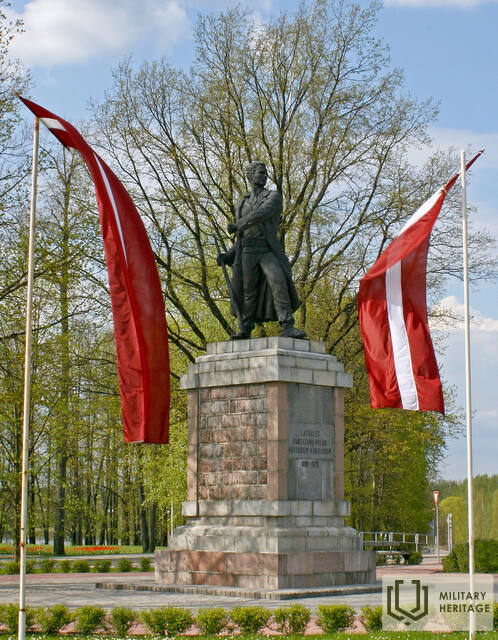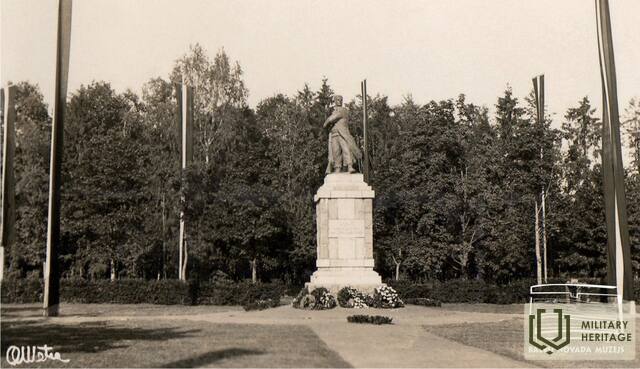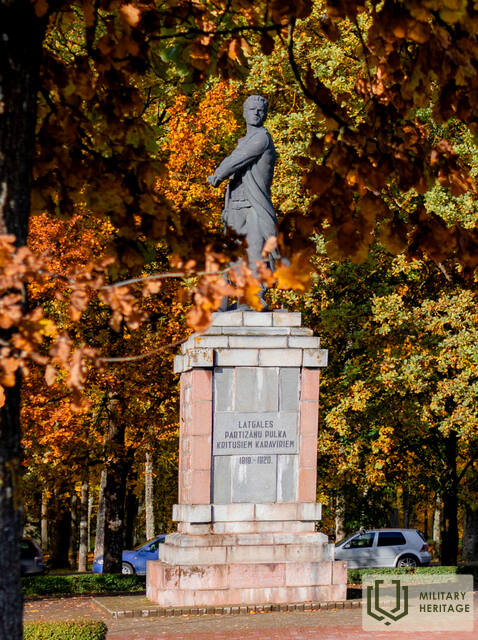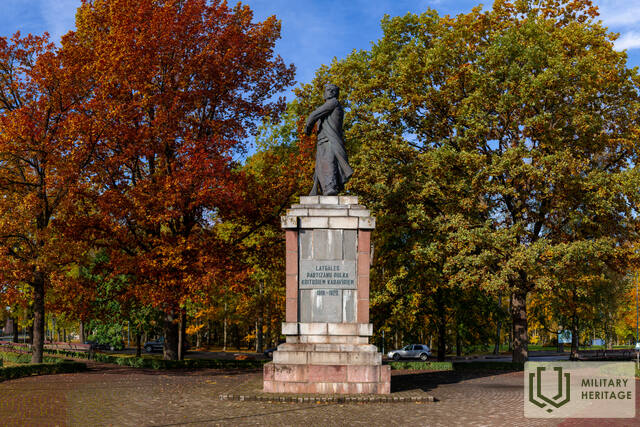Monument to the fallen soldiers of the Latgale Partisan Regiment 1919 - 1920
Memorial site

 218
218


During the Latvian War of Independence (1918-1920), the Balvi Partisan Division was formed in the Balvi region on the initiative of local residents, which was soon transformed into the Latgale Partisan Regiment.
The idea for a regimental monument arose as early as 1927. In 1933, former Latgale Partisan Regiment soldier and stonemason Jānis Pilmanis built a 5-meter-high stone pedestal for the monument at his own expense. The bronze monument itself was created by artist Kārlis Jansons.
The monument dedicated to the memory of the fallen soldiers of the regiment was unveiled on August 14, 1938, with the participation of General Jānis Balodis. Although the official name of the monument was “Guarding Partisan”, the people soon simply called the monument “Balva Stanislava”.
After Latvia was occupied by the USSR, the monument was demolished in the spring of 1941 by decision of the Abrene County Executive Committee. The high pedestal was demolished, but the bronze monument itself remained in the Balvi police yard.
During the German occupation, the monument's pedestal was not restored, but the bronze monument itself was placed in its previous location. After the second return of the Soviet occupiers in 1944, the monument was completely destroyed.
When Latvia regained its independence, the people of Balvi collected donations for the restoration of the Latgale Partisan Monument. On November 11, 1993, the restored monument by Andrejs Jansons, son of artist Kārlis Jansons, was unveiled in Balvi.
An additional commemorative plaque was added to the back of the monument's pedestal with the text "Renovated also honoring the Latgale national freedom fighters of 1940-1954."
Used sources and references:
Irēna Šaicāne (2013) Balvi and Balvēniēši in the 20th century “Staņislava” stories. Riga: Jumava Publishing House, pp. 225 – 233.
Anna Āze (2019) Jānis Pilmanis Freedom Fighter – Strongman. Memory Notebook., Author's Edition., pp. 14 – 15.
Related timeline
Related topics
Related stories
Liberation of Northern Latgale from the Bolsheviks
On December 1, 1918, the Red Army units, based on the Red Riflemen units, invaded the territory of Latvia. In order to protect their homes, families, native region and escape from terror, the men of the Balvi area took up arms and went into the forests, the formation of the first “green” groups began. In the spring of 1919, when mobilization was announced, many men of the Balvi area found fighting in the Soviet Latvian Army unacceptable and joined the “green” groups. The Balvi, Silakrogs, Rugāji, Teteru-Dūrupe and Liepna groups were formed. The activities of the “green” groups in the Balvi area became more active in March 1919.









